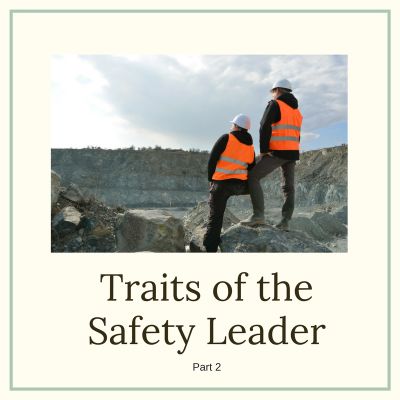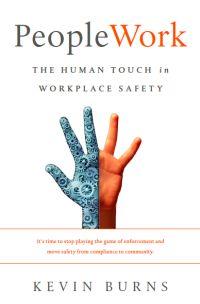Safety leadership has little to do with position or title.
 Safety leadership has little to do with position or title. One needs not be in a management or in a supervisory position to be a leader. In fact, some of the best leaders are ordinary employees. They just happen tzo possess certain traits that cause others to ask their advice or input. They tend to stand a little taller than some of their fellow employees. And it’s not because they are more experienced or have greater tenure. Mostly, leadership is about the person you are and the way you carry yourself.
Safety leadership has little to do with position or title. One needs not be in a management or in a supervisory position to be a leader. In fact, some of the best leaders are ordinary employees. They just happen tzo possess certain traits that cause others to ask their advice or input. They tend to stand a little taller than some of their fellow employees. And it’s not because they are more experienced or have greater tenure. Mostly, leadership is about the person you are and the way you carry yourself.
In this series of safety leadership posts, we are exploring personal traits. Leadership goes beyond experience and technical expertise. To become a leader requires more than years on the job or seniority in a company. Leadership is a lifelong commitment to self-improvement. Leadership is about being outward-focused; concerned about the well-being of others.
As was outlined in the first post, this is not the definitive and exhaustive list of leadership traits. There will be many. And with each post, I will offer up three traits so that you will hopefully take the time to do an honest self-assessment on each of the traits. So with that being said, let’s explore the next three traits of safety leadership:
4Caring. Simply put, how can you lead others if you don’t care about them? The purpose of leadership can be compared to that of a fruit tree. The purpose of a fruit is not to grow fruit - but to grow another tree. So too is that the way with leadership. And even more so with safety leadership. In addition to caring about a fellow-worker’s safety, caring about the person him or herself is paramount. It is difficult to comprehend how you could care about the person's safety without caring about the person. Caring extends far beyond just safety. But caring is part of good safety leadership. In fact, people will tend to care about their own safety once they understand that you care about them. And as much as you can tell someone that you care about them, once you make them feel how much you care, you created connection and trust. And in the strong safety cultures there is trust and caring. Safety leaders care.
5Engagement. It would seem like the next logical step after caring is engagement. It is tough to be engaged and to engage others without caring. Engagement is about the level of attention and focus. Gallup’s Workforce Engagement Surveys peg the disengagement rate around 70 percent. Seven out of ten employees are deemed to be not actively engaged in their work. And here's where it gets concering. These numbers also include managers, supervisors and, yes, even safety people: management and administration. Without engagement, how can you do safety effectively? If you’re not engaged in the work, you will not be engaged in safely doing the work. So safety leaders need to be both engaged and engaging. It’s a necessary trait to help others to focus on task and to be aware of the risks around them.
6
Communication. There is no job in the world that doesn’t serve someone else. Even when working alone, you’re in a job that serves someone else. That is never more true than when you work in a supervisory position or as a safety person. Your job serves others. In supervisory or safety, employees don’t work for you. You work for them. And as such, you must master the skills of communication. A person with poor communication skills rarely ascends to leadership, personally or professionally. People look up to and follow those who have excellent communication skills. Safety leaders with good communications skills are able to articulate what needs saying. More importantly, they communicate in such a way that the information is easily understood. Leaders know that saying something isn’t communication until what is said is understood by the other party. Words become communication when they are understood. Safety leaders use their words effectively and in an engaging way. This is a crucial point if you're running safety meetings. Don't think because you said something and used a PowerPoint slide that it was understood. If you try to present too many things at once, you muddle your own communication. The words you use must be understood before you can consider yourself a strong communicator.

Now, take a moment to assess how well you’re doing in how you demonstrably show that you care. Then, think about how well set the example that you are engaged in your work and engaging in how you connect with others. Finally, give yourself an honest score of how effective your communication skills are. True safety leaders, communicate well, are engaging and they care.
Kevin Burns has authored ten books on human performance and safety, including his most recent release, PeopleWork - The Human Touch in Workplace Safety. Buy it now on Amazon. Then, consider bringing Kevin's consulting expertise to your company or have him speak at a safety event.
©2017 ZeroSpeak Corporation and Kevin Burns.
No part of this post may be reproduced without the expressed consent of the author.


